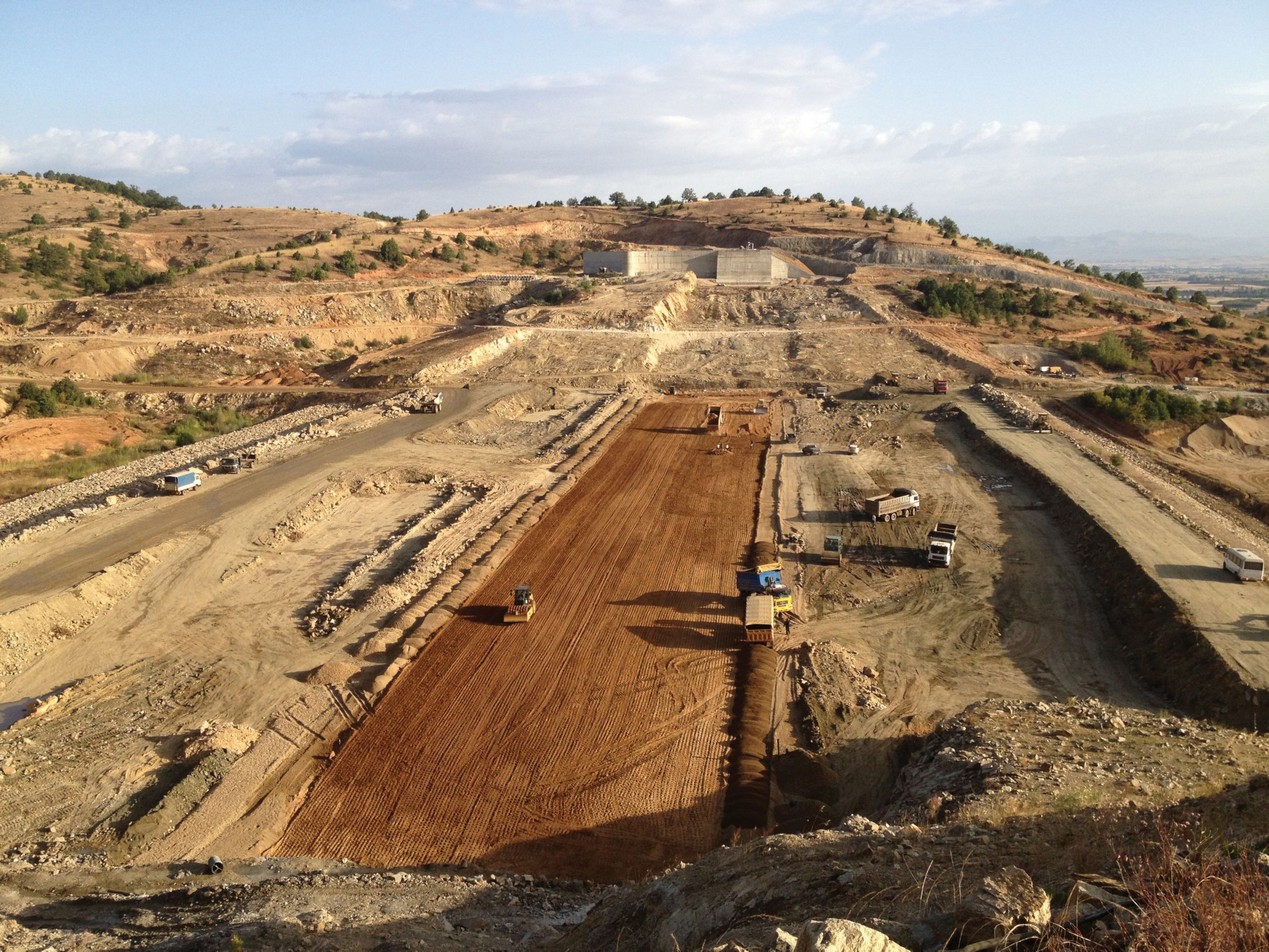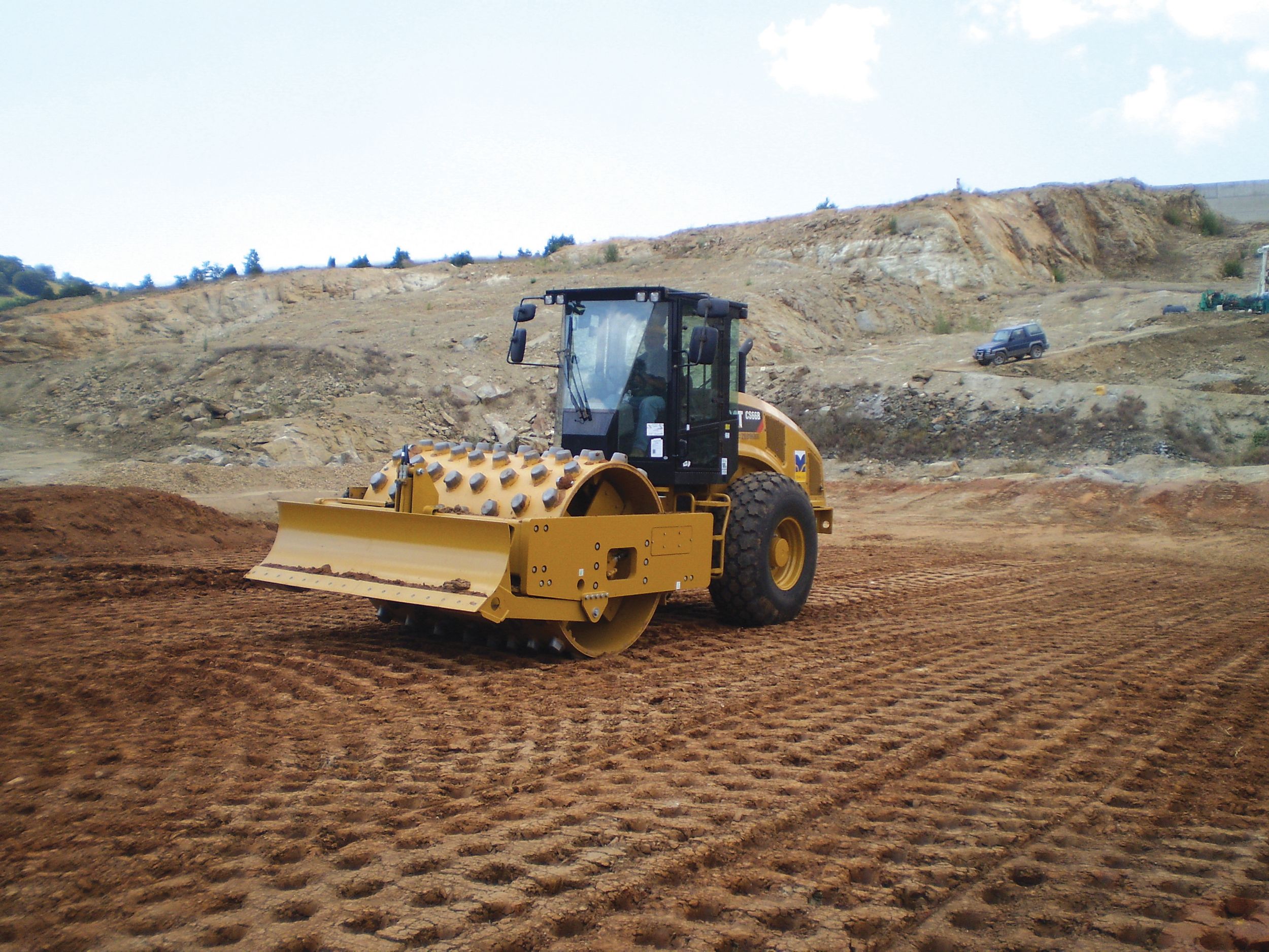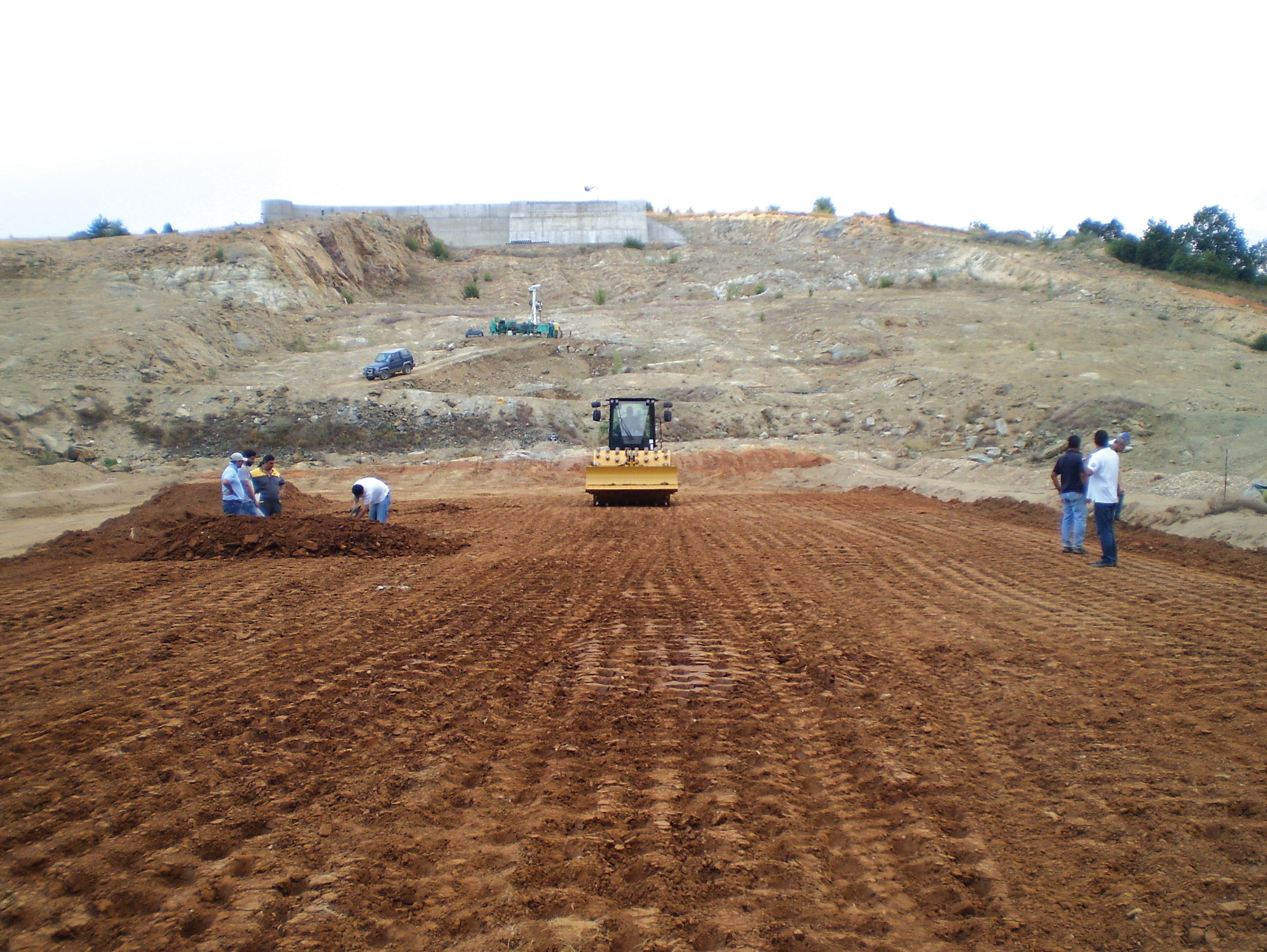Machine Drive Power Helps Eliminate Thousands of Passes, More than Doubles Working Speed
George Nathanailidis and his TENA SA crew faced an enormous soil compaction challenge on a dam jobsite near Triantafullia, northern Greece.
TENA was responsible for placing 42 m (138 ft) of compacted materials on an existing embankment of 33 m (108 ft). The earthmoving volume for the massive earthen dam exceeded 350,000 m3 (457,765 yd3). The material had to be applied in 20 cm (7.8 in) layers, and compacted to 15 cm (5.9 in)—at a length of 364 m (1,194 ft) and at a width of 18 m (59 ft).
Volume was only part of the challenge. “We worked in sandy clay,” Nathanailidis says. Achieving uniform compaction would prove difficult, while monitoring densities would be challenging and less than comprehensive.
TENA SA turned the nightmare job into a dream with the help of a new machine-integrated soil compaction measurement technology called Machine Drive Power, or MDP.



